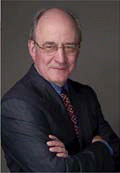Dr. Larrabee and Dr. Henderson say that a sunscreen with 30 SPF is adequate for most people. Sunscreen should be applied to the skin repeatedly throughout the day. They both recommended Anthelios ™ SPF 30 as a good choice.
Explore This Issue
August 2008The best sunscreens contain a number of ingredients to block UVA, Dr. Carruthers said. These are Parsol 1789, titanium dioxide, avobenzone, and mexoryl. UVA radiation can penetrate windows-car windows, windows at home, windows at work. In addition, people need to know that only 10% less UVA comes through on a cloudy day. Hence, there is the need to wear sunscreen throughout the day, whether indoors or not, and to reapply it during the day. Also, Dr. Carruthers advised being prudent about sun exposure, and wearing a hat between 1 and 3 PM when outdoors.
Responding to concerns about people who wear sunscreens not getting enough vitamin D to maintain bone health, Dr. Carruthers commented that 15 minutes a day of sun exposure should fulfill the vitamin D requirement. People who are fair-skinned should be cautious about sun exposure during the heat of the day, however.
There are a thousand other topical agents for sun protection and antiaging, but most of them have more marketing than science behind them, she stated.
 Anyone who is well trained and credentialed can do these procedures-and that includes dermatologists, ophthalmologists, otolaryngologists, and facial plastic surgeons.
Anyone who is well trained and credentialed can do these procedures-and that includes dermatologists, ophthalmologists, otolaryngologists, and facial plastic surgeons.-Wayne Larrabee, MD
Another product Dr. Larrabee and Dr. Henderson recommended is Remergent™, which promotes repair of DNA sun-induced injury. We use vitamin A derivatives, hydroquinone, glycolic acids, and sunscreens, and tailor these agents according to the problems, such as sun damage, wrinkling, pigment changes, and thinner, dryer, skin that has lost its elasticity, they said.
Botox and Fillers
New evidence suggests that as people age, they fall into patterns of facial innervation that affect the lips, brows, and other parts of the face. Repetitive movements due to changes in facial innervation lead to changes in the skin, creating either wrinkled brows, frown lines, or purse strings around the lips. These are called dynamic changes.
Botox™ [botulinum toxin] is one strategy to address dynamic skin changes; Botox lifts and recontours the brows, gets rid of frown lines and purse strings around the mouth, and lifts sagging segmental skin in the neck
Botox makes people look 10 years younger, Dr. Carruthers said.
Botox may be sufficient to restore volume and help wrinkles for younger people, but for women in their 40s and 50s, Botox should ideally be joined by a filler, Dr. Carruthers continued.
Leave a Reply